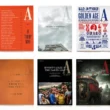Gen Z will pay for games, entertainment and travel. “So how can we make our news so interesting, or so relevant, or so representative for them that they want to pay for it?” asks Liesbeth Nizet, Head of Future Audiences Monetization at Mediahuis, the €1bn-revenue pan-European news group. Her job is to figure that out.
Many publishers bemoan younger people’s lack of engagement and scepticism of the news. Under 35’s are much more likely to say the news is too hard to follow or understand, according to 2025’s Digital News Report from the Reuters Institute. It’s risky in today’s landscape to assume engagement with news will grow with age, so publishers need to be thinking consciously about their strategies for future audiences.
Mediahuis, a media group with a presence in Belgium, the Netherlands, Ireland, Germany and Luxembourg, appointed Liesbeth Nizet as Head of Future Audiences Monetization in 2024.
She certainly holds one of the more unique job titles in the industry. It was created as the company could see two major threats coming which would shake up their business model: AI, and a loss of connection with young people.
But Nizet’s focus is not just on reconnecting with Gen Z. ‘Future audiences’ also encompasses those who don’t read or have stopped reading the news. “We really wanted to see, how can we make sure that Mediahuis is also futureproof within 10 or 15 years, not only by looking at younger audiences, but people that today have some kind of affinity with news, but that don’t come to our own platforms,” she told The Publisher Podcast this week.
Journalism for young people, not about them
One of the new initiatives Nizet has spearheaded is the launch of an entirely new Gen Z news brand earlier this year. SPIL news is aimed at Dutch under-25’s, following research that showed the majority (58%) saying they didn’t have a news source they could trust.
Mediahuis wanted to see if it was possible to make journalism for that generation, and apply the learnings across the rest of the portfolio. “If we understand how they are acting, we can also see what could work for our other brands,” Nizet explained.
SPIL has a presence on TikTok, Instagram and YouTube, as well as its own podcast and website. Crucially, the team of four journalists are also all in their early 20’s. “They don’t need to ask the audience what’s keeping them awake at night: they are the audience,” said Nizet. “Media has been writing about younger people, but not to younger people. They hate to be preached at, and that is where we can make the difference.”
The brand covers everything from gold toilet auctions to celebrities and local carnivals, but there is also political content, all through the lens of what younger people care about. In the run-up to the Dutch general election in October, reporting was focused on what the policies of the various parties meant for their young audience.
Journalism through a creator lens
One of the keys to connecting with under 25’s is to have a ‘creator’ mindset to journalists and journalism. Young people are very used to someone telling a story to camera, whether that be explainers, updates, or entertainment. Journalists on Mediahuis’ new SPIL brand are naturals at this. But Nizet said it’s something their other more established brands are struggling with.
“[Those journalists] were hired to write articles, so it’s hard sometimes to put them in front of a camera,” she pointed out. Many chose in training whether to go into radio, video or writing, but to be successful in the future, they can’t view these things in silos. They are increasingly expected to be able to do it all.
Nizet is working on bridging these gaps at an organisational level, inspiring staff with new ways of bringing stories to people. Podcasts are a good middle step, without the pressure of being on-camera. “But even with podcasts, it’s not the goal that those are just articles that are [read] out loud,” she emphasised. “So we need to see how can we bring that interaction? How can we create this habit, and people wanting to follow other people? That’s really something that we need to [build] in our whole organisation.”
A whole-company approach has been taken to share these learnings. Mediahuis has built an internal learning platform to share lessons about future audiences, including a weekly newsletter.
SPIL content on TikTok now reaches millions of young people weekly. Nizet believes this shows they are clearly interested in the journalism, if presented in the right way.
It is non-negotiable for Mediahuis that they continue to build out their social media presence for their news brands. Nizet sees these platforms as a vital place to build trust, and educate young people on what journalism is.
“Younger people said to us, ‘We really know that when we are on TikTok, that we see the perspective of this one person, or this influencer,’” she said. Their Gen Z audience have said: “Give us more perspectives, and if you want to do even better, help us to form our own perspective out of it.”
But this isn’t about building on rented land. Off-platform content is seen as a hook to bring users back to Mediahuis’ own products and brands.
Young people and paying for news
As well as designing and implementing audience strategies to connect with these audiences, Nizet is also tasked with monetising them. She rejects the idea that young people won’t pay, or even historically that they haven’t.
“They are paying for a skin on Fortnite. They are paying for a nice [Instagrammable] weekend with Airbnb. They are paying for their Red Bull,” Nizet pointed out. “So how can we make our news so interesting, or so relevant, or so representative for them that they want to pay for it, even in small amounts?”
SPIL is moving towards a membership model instead of traditional subscriptions, to encourage a sense of belonging. These strategies are in their early days, but she believes monetisation will always find a way. “If you are able to catch the eyes and the attention of a certain audience, then you will always find a way to make money around it,” she outlined.
This may not be transactional subscriptions that are taken out for a lifetime. Instead, Mediahuis are exploring a membership-led approach, and smaller transactions. Nizet thinks that the traditional pattern of taking a subscription once a person has started work doesn’t apply any more as the news landscape is so fragmented. Substack is one place she is looking for inspiration, where people of all ages are willing to pay small monthly amounts to support creators in specific niches.
Crucially, building trust and engagement cannot come at the expense of quality. “For us, it’s really important that [content] is aligned with the mission,” Nizet emphasised. “We are not putting cat videos out because it’s funny, to catch attention. We really need to do it with journalism. Then there is a way [to monetise].”
Advice for connecting with future audiences
Publishers looking to improve their engagement with younger audiences don’t necessarily have to go on a Gen Z hiring spree. Nizet advises looking inside the newsroom for those who think outside the usual ecosystem.
“At Mediahuis…we bring people to our platforms, and we monetise them there with advertising and subscriptions,” she said. “But what we need now is people that are on the lookout for what is happening in the world, and how can we translate it to our journalism?”
Nizet also emphasised that it was important for publishers to get close to their audiences, and those who they want to be their audience. There’s a particular opportunity here for younger people who are being bombarded by AI videos and content, and will question what is trustworthy. “We need to be there to bring them home, but we need to do it with the right journalism for them,” she said.
The next job on Nizet’s plate is looking at branding across Mediahuis’ titles. She said this is a particular challenge given the change in how people now find news: “If you want news to reach me, you need to be there, and yet we are not visible in the streets. People don’t have newspapers on the train. There are no places where you can buy newspapers in the street any more.”
“If we are not where they are, we might become invisible. And if you become invisible, we won’t monetise them either.”
Her work at Mediahuis will be considered a success when they are seen not just as a reliable source of news, but a place where young people feel “inspired and recognised.” When their need for a sense of belonging is met, everything else will follow.
Listen to the full MediaVoices interview with Liesbeth above, or search ‘The Publisher Podcast’ on your podcast app of choice.
How I do it: Gert Ysebaert, Mediahuis




